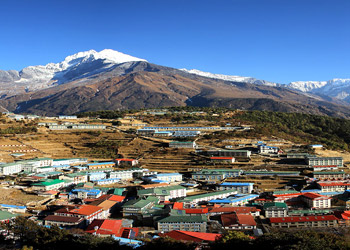Altitude Sickness | Life-Saving Tips for Trekkers
Altitude Sickness: Acute Mountain Sickness (AMS) can develop at any altitude over 2,000 meters during Nepali trekking. The early symptoms are a headache, extreme fatigue, and loss of appetite. Some people become breathless at rest.
AMS is the result of fluid accumulating in parts of the body. Where it does not belong: in the brain, the lungs, or both; when mild symptoms develop, it signals that you must stay at that altitude until symptoms disappear.
Never ascend with any signs of AMS! Usually, within one or two days, you will feel well and can continue your trek.
If you are resting at the same altitude and your symptoms worsen, descending for Altitude sickness is necessary. Worsening symptoms of AMS include increasing tiredness, severe headache, vomiting, and loss of coordination.
There are signs of High-Altitude Cerebral Edema (HACE). If progressive symptoms are ignored, HACE can lead to unconsciousness and death within 12 hours. Increasing shortness of breath, cough, and tiredness are signs of high-altitude pulmonary edema (HAPE), which can also be rapidly fatal if ignored.
5 Major Tips to Avoid Altitude Sickness
1. Drink 5 liters of Water per day
Drinking water is beneficial every day and every time. However, drinking plenty of Water during treks can prove essential and prevent altitude sickness.
2. Do not starve your body; instead, eat more and more.
Due to the changed climate and environment, you might not need to eat much. However, to keep yourself safe from altitude sickness, you must eat a lot so your body doesn’t lack nutrients.
3. Take time for Acclimatization
You need to take your time and explore certain regions to adjust to the altitude and climate. This way is the best to improve your trekking experience and save yourself from altitude sickness.
4. Do not Rush yourself to achieve your goals
We understand that you have dreams and goals to achieve. However, it would help if you did not risk everything, including your life, to achieve them. You need pace, patience, and endurance; most of all, you need yourself.
5. Listen to your body
Sometimes, you have good mental strength, but your body doesn’t listen. So you can listen and take care of your body. When you feel uneasy, tell your guide, and they will help you go through the trek.
Prevention of Altitude Sickness:
Having a sensible itinerary is essential for avoiding altitude sickness. Above 10,000 ft (3,000 m), it is recommended that one climbs not more than 1,000ft (300m) daily.
If the terrain is such that this is impossible, one must have two rest days. For example, two rest days are recommended at Namche Bazaar, where 2,000ft (600m) is gained in 1 day from Phakding for most itineraries. Having flexibility with 1-2 extra days built into your schedule will allow you to rest when you are not feeling well and help avoid altitude illness. It also helps to `climb high` and `sleep low.`

Use Diamox, which blocks an enzyme in the kidney and makes the blood acidic, interpreted by the brain as a signal to breathe more. Therefore, Diamox enhances the physiological response to altitude by increasing the rate and depth of breathing and acts as a mild diuretic. Side effects of the medicine are tingling of fingers and toes and tingling around the mouth.
A prophylactic dose of Diamox is half or one 250mg tablet twice daily. Diamox will not mask the symptoms of altitude illness if it is to occur. Start taking Diamox the day before the ascent to 10,000 ft (3,000m), continue it through your rise to higher altitudes, and stop when you start descending.
Another preventive strategy, such as Gingko Biloba, which was once thought to be useful for altitude illness prevention, has not been found helpful in several studies. Salmeterol (Serevent) inhaler used to treat asthma can help prevent HAPE and may be used prophylactically by HAPE-susceptible people. For persons allergic to sulfa and abrupt ascents, it is possible to use dexamethasone.
Treatment of Altitude Sickness:
For mild symptoms of altitude sickness in Nepal trekking, one can stay at the same altitude to see if symptoms will resolve and ascend when symptoms have resolved entirely. Diamox can also be used to treat mild to moderate symptoms. If symptoms persist or worsen at this altitude, the descent is required.
For severe symptoms of HACE or HAPE, descent must begin immediately whenever feasible. Helicopter evacuation may be essential for decline unless medical treatment is rapidly improved and walking down is reasonable. Physical exertion, even when it is for the descent, can be detrimental for patients with HAPE. Severe HAPE patients should be carried down if helicopter flight evacuation is not possible for your Nepal trekking.
Book with Confidence
- Flexible bookings and easy trip date changes
- Personalized service and customized group sizes
- Safe travels with owner-operated services and highly experienced guides
- Best price guarantee for the most value for your money
- Secure & easy online booking
 Have Questions?
Have Questions?
Talk to Expert
Meet Mr. Puru Timalsena, Nepal's best trek and tour organizer, who has been working in the Himalayas for more than 15 years.
WhatsApp/Viber +977 98510 95 800








